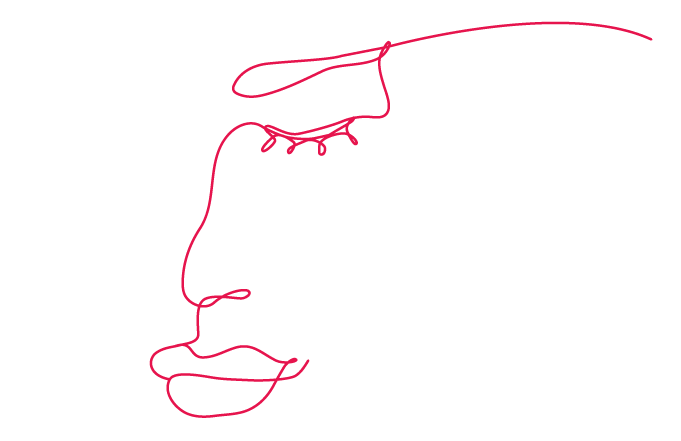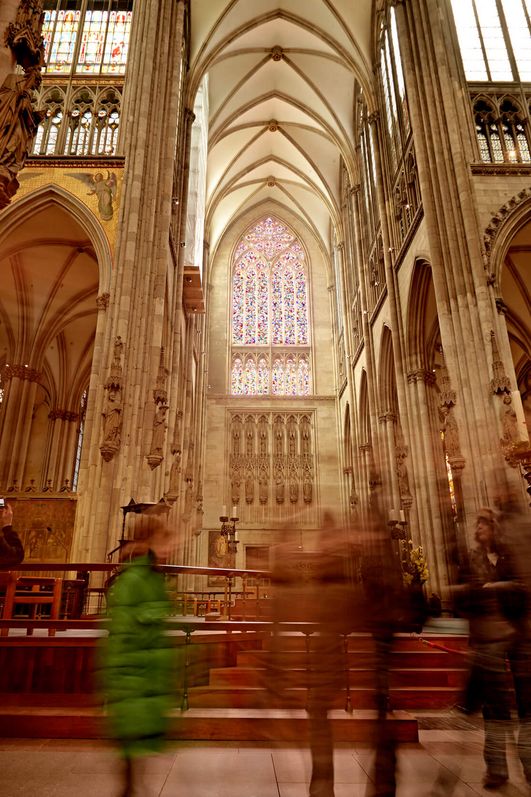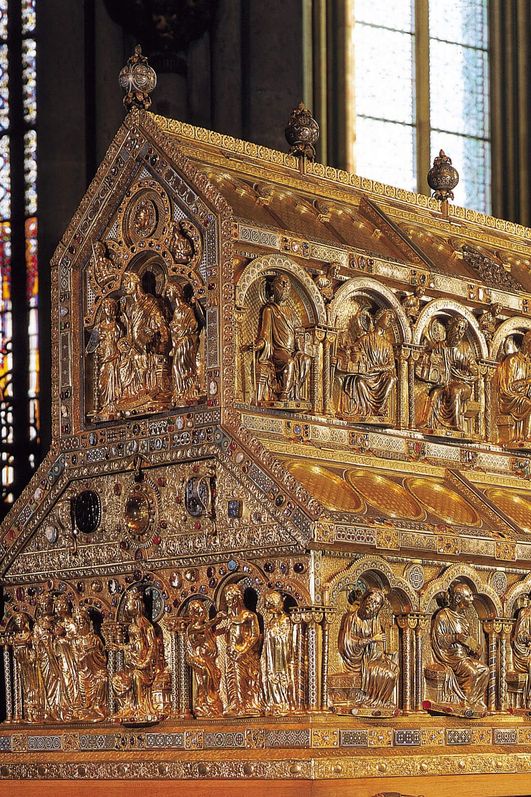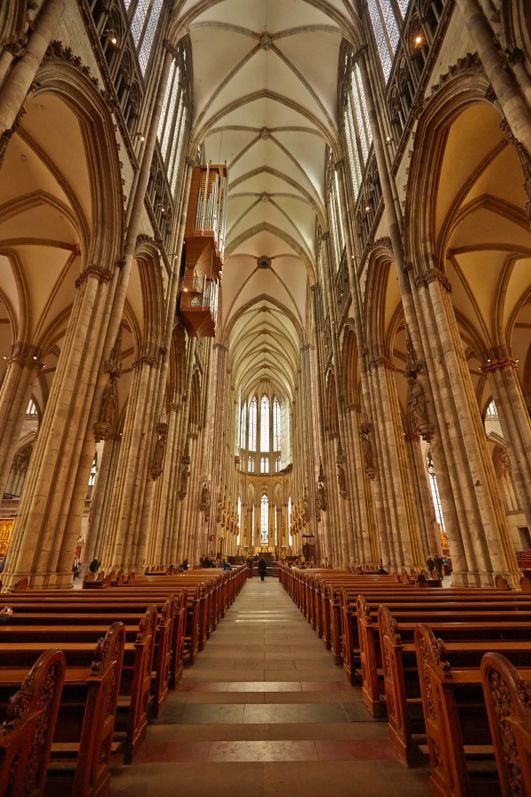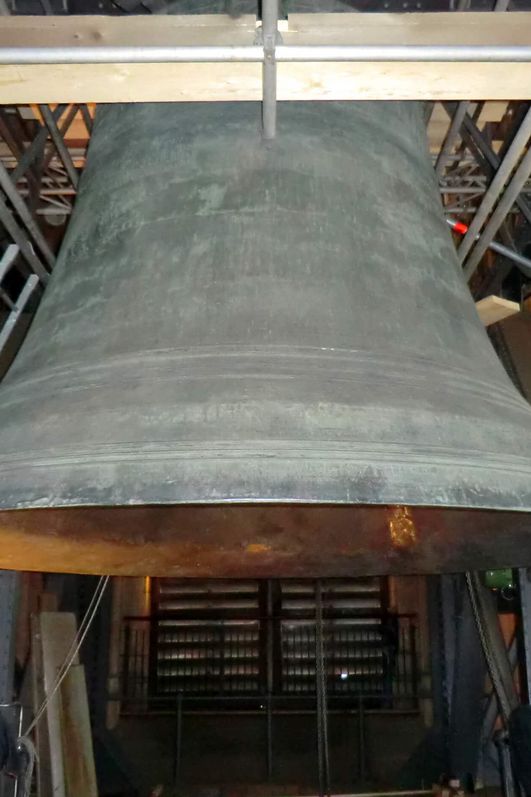6:00 a.m. in Cologne. Hardly anyone, not even Cologne residents, knows that this is when the Cathedral opens its doors. You’ll then be one of the few visitors there to enjoy the stunning atmosphere of the interior. Such an opportunity won’t come up again until tomorrow, given that the Cathedral attracts about 20,000 visitors per day.
As you enter through the main portal, you walk into the 144-metre long nave and a space 43.35 metres high rises above you. Even the Statue of Liberty could almost stand upright here.
